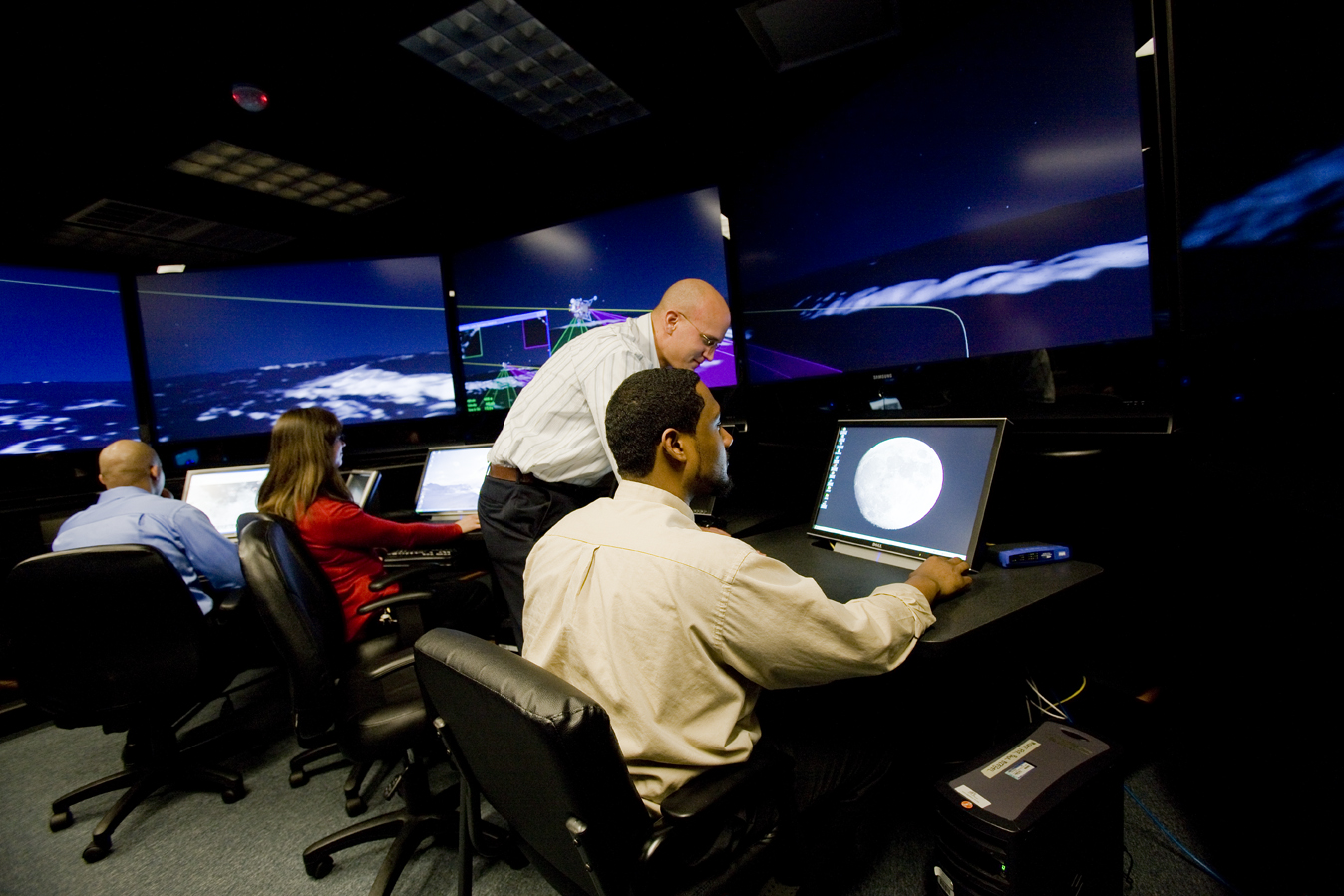Press Release
APL Satellite Facility Tracks NASA Lunar Impact Mission
Fri, 10/09/2009 - 08:41
This morning the 60-foot satellite communications dish at The Johns Hopkins University Applied Physics Laboratory in Laurel, Md., was trained on the moon — tracking the plunge of NASA’s water-searching Lunar Crater Observation and Sensing Satellite (LCROSS) into the lunar surface.
APL’s Satellite Communications Facility, with support from NASA’s Space Operations Missions Directorate, provided near-real time Doppler tracking data to the LCROSS navigation team at NASA’s Jet Propulsion Laboratory in Pasadena, Calif. Radio signals were sent to the spacecraft from NASA Deep Space Network antennas in Spain and California; those DSN antennas, as well as the APL dish, measured the Doppler shift in the spacecraft’s position by processing the signals LCROSS sent back.
“Our data enhanced what the JPL team collected through the DSN, and increased their pointing and tracking knowledge of LCROSS’ path to impact,” says systems engineer Dan Ossing, who led the APL tracking team. “We knew the quality and timeliness of the APL data would be critical to the mission.”
The LCROSS spacecraft, as well as the upper stage of the rocket that delivered it, slammed into the shadowed crater Cabeus about five minutes apart, at 7:31 a.m. and 7:36 a.m. EDT today. The goal of the mission is to search for water ice; the target crater is near the lunar south pole. Scientists will analyze data from the spacecraft’s instruments to assess whether water ice is present.
APL has a role in other observations of the LCROSS site. The APL-operated Mini-RF radar instrument, currently circling the moon aboard NASA’s Lunar Reconnaissance Orbiter, will scan the impact area on the Cabeus floor. “The images we acquire will help us to characterize differences in the floor of crater, from what it looked like before LCROSS hit and what it looks like now,” says APL’s Ben Bussey, Mini-RF deputy principal investigator and an LCROSS program scientist.
Among other sources, NASA also used data from Mini-RF — which searches for radar-reflective materials that could be water ice — to select the LCROSS impact site.
For more information on the LCROSS mission, visit:
http://www.nasa.gov/mission_pages/LCROSS/main/index.html
